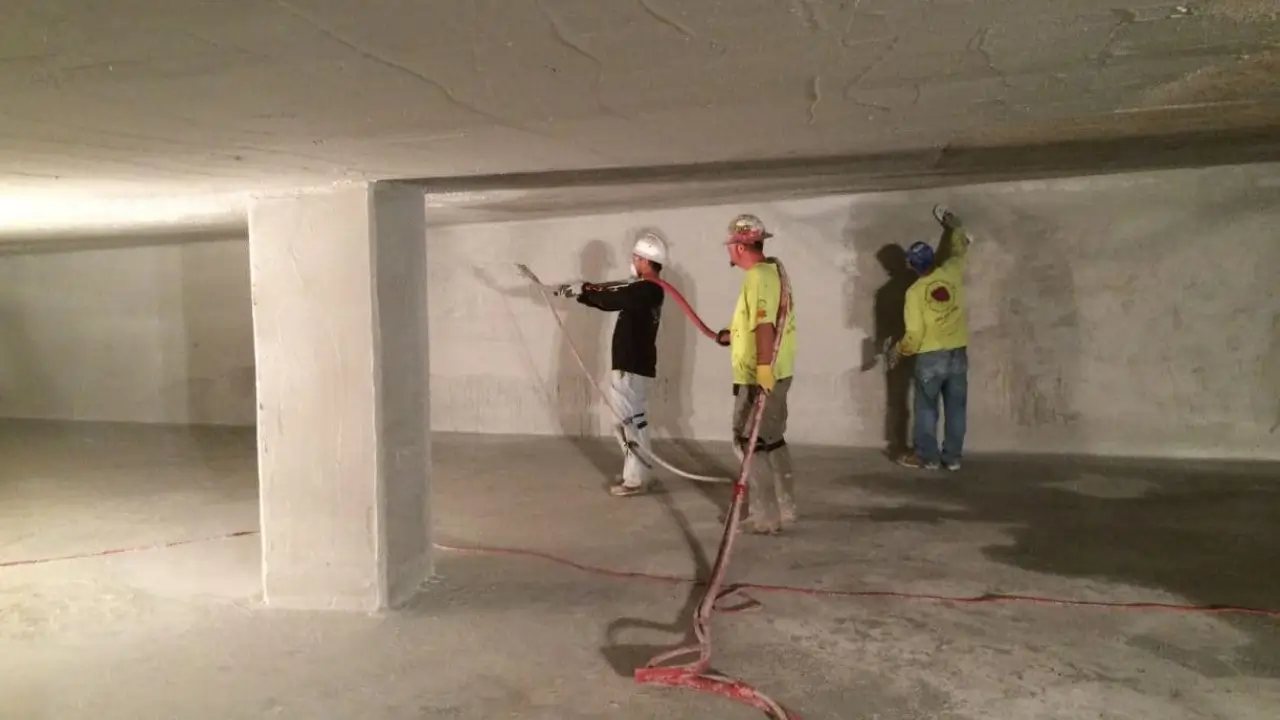
Protecting a structure against water ingress is essential not only for maintaining structural integrity but also for ensuring long-term interior comfort. While waterproofing is often associated with “positive-side” applications—those applied externally to prevent water from entering—a significant number of scenarios demand intervention from within the structure. This is where negative-side waterproofing becomes a critical solution.
Negative-side waterproofing refers to the application of waterproofing materials on the interior surface of a structure, where water is seeping in from the outside due to hydrostatic pressure. It is especially useful in existing buildings where external excavation is not feasible. With the right materials and correct installation techniques, negative waterproofing can offer an effective, economical, and long-lasting solution.

Understanding Negative-Side Waterproofing
Negative-side waterproofing involves stopping water that penetrates from the exterior (soil or groundwater) by creating a barrier on the interior face of the structure. The term “negative” refers to the direction of water flow—from outside toward the interior.
While positive waterproofing is applied to the face where water pressure is present, negative waterproofing is applied to the face where water ultimately appears. It is typically used in situations where the outer surface of a wall or slab is inaccessible, such as in the case of fully buried basement walls.
Typical Applications
Negative waterproofing is preferred in existing structures or where access to the external face is impossible or impractical. Common areas of application include:
- Basement interiors
- Elevator pits
- Underground shelters
- Retaining walls (from the interior side)
- Interior walls of old water tanks
- Underground parking garages
- Structures located in areas with a high water table
In heritage or densely built-up areas where excavation is prohibited or infeasible, negative-side waterproofing becomes not only the most viable solution but often the only one.
Specialized Materials Used
Negative-side waterproofing requires specialized materials that can resist water pressure trying to force its way through the structure. Generic waterproofing products are often insufficient, as they may fail under negative hydrostatic pressure.
1. Crystalline Waterproofing Compounds
- Penetrate into the concrete matrix
- React with water to form insoluble crystals
- Permanently block capillaries and microcracks
- Reactivate upon future water contact
Example: Dryfix Crystallize
2. Polymer-Modified Waterproofing Mortars
- High elasticity and flexibility
- Form a seamless waterproof barrier on internal surfaces
- Easy and fast application
3. Injection Systems (Epoxy or Polyurethane)
- Used for point-source leaks or active water ingress
- Injected into cracks using high-pressure pumps
- Expand and cure within the voids, sealing water paths
Example: DF PUR INJECTION 2K by Dryfix
Dryfix offers solutions across all three categories, combining proven crystalline technology with advanced polyurethane injection systems.
Application Procedure
Installing a negative-side waterproofing system requires precision and surface preparation. Below is a general application guideline:
1. Surface Preparation
- Remove old coatings, paints, and loose particles
- Expose the bare substrate
- Clean the surface thoroughly of dust, oil, and contaminants
2. Structural Repairs
- Fill cracks, joints, and voids using repair mortars
- Areas with active leaks may require quick-setting hydraulic plugs
3. Priming (Optional)
- Depending on the product, a primer or water saturation may be required to ensure adhesion
4. Waterproofing Layer Application
- Apply crystalline or polymer-modified mortar with a brush or trowel
- Apply at least two coats in perpendicular directions
- Respect recommended curing intervals between coats
5. Curing
- Keep the surface moist or prevent water loss for optimal curing
- A curing period of 3–5 days is generally recommended
Advantages of Negative-Side Waterproofing
✅ Ideal for existing buildings: No excavation required
✅ Cost-effective: Eliminates external groundwork and labor-intensive processes
✅ Durable: Provides long-term protection when quality materials are used
✅ Self-healing properties: Crystalline systems can re-activate in the presence of moisture
✅ Effective against hidden leaks: Seals even capillary cracks that are invisible to the eye
Limitations and Considerations
⚠️ Not as ideal as positive-side waterproofing: Water still enters the substrate before being stopped internally
⚠️ Requires purpose-designed products: Inappropriate materials will fail under pressure
⚠️ Application must be precise: Any lapse in preparation or installation can result in failure
⚠️ Surface cleanliness is critical: Poor adhesion leads to compromised performance
When Is It Mandatory?
Negative-side waterproofing becomes indispensable when:
- Heritage buildings prohibit external excavation
- Excavation around a completed structure is not possible
- Adjacent buildings restrict exterior access
- High water tables exert strong hydrostatic pressure
- Immediate remediation is needed for active leaks
In such cases, negative waterproofing is not just an alternative—it is the only viable solution.
Let Your Building Breathe – But Not Leak
Although often overlooked, negative-side waterproofing can be a highly effective and technically sound solution when implemented with the right system. Especially in basements, elevator shafts, and retaining structures, it protects against long-term structural damage and prevents health hazards such as mold and mildew.
If you’re facing persistent water intrusion and external intervention isn’t feasible, now is the time to explore negative-side waterproofing solutions from Dryfix—where performance meets practicality.
